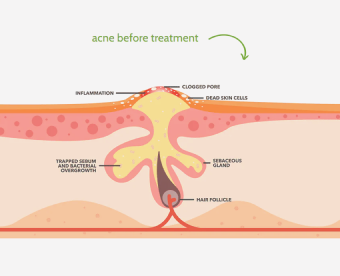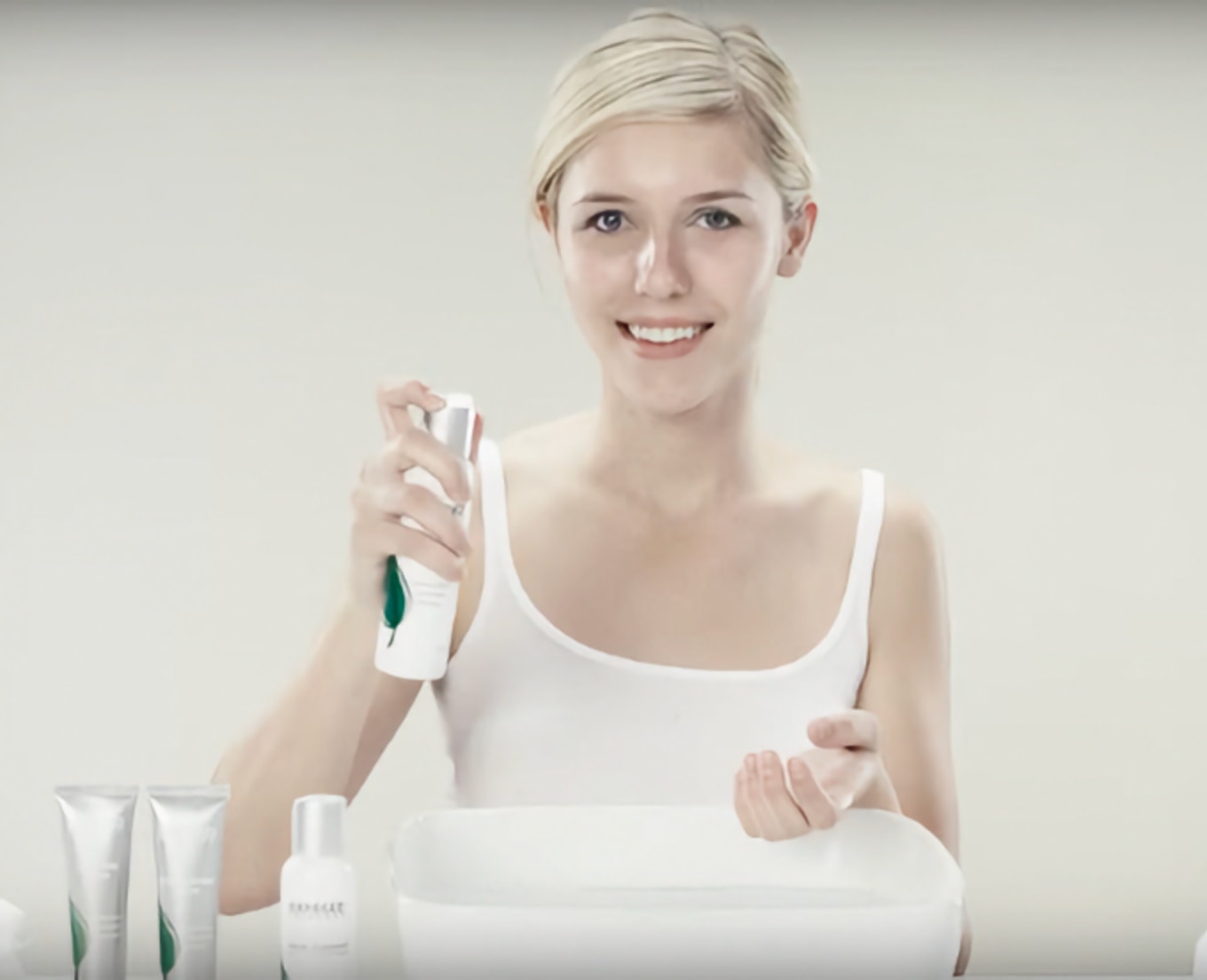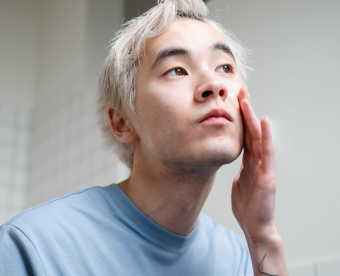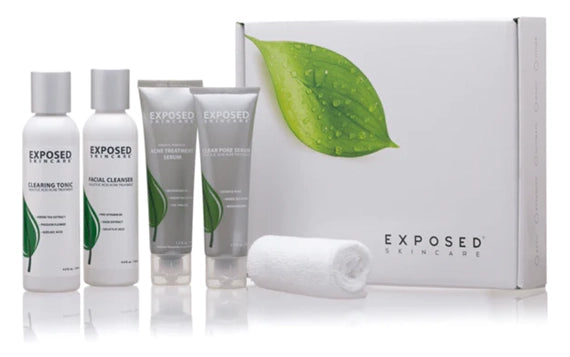Does Rubbing Ice on Your Face Help Acne? (4 Reasons Not To)
In the world of beauty, home remedies often take center stage. Amid these, "Does rubbing ice on your face help acne?" is a question that has raised a lot of curiosity. After all, it seems simple enough: grab an ice cube from the freezer, and voilà—your skincare problems disappear. But is it that easy? Can you achieve radiant skin and bid farewell to acne just by using ice cubes for your skin?
While facial icing might seem like a magical solution to skincare issues, it's crucial to delve into this notion and understand its implications on your skin. This article will highlight why rubbing ice on your face might not solve acne problems.
Also read: How to choose the best acne treatment
Biggest Take-Aways:
-
Directly applying ice on your face can lead to irritation, temporary pore constriction, and exacerbation of certain types of acne, and does not address underlying acne causes.
-
Rather than direct application, using ice indirectly or alternatives like aloe vera or green tea ice cubes can offer cooling benefits without skin irritation.
-
For effective acne management, focus on a balanced, consistent skincare routine tailored to your unique skin needs.
-
Products like Exposed Skin Care can relieve acne, mimic the soothing effects of icing, reduce puffiness, and maintain skin hydration.

Why You Should Rethink Rubbing Ice on Your Face
There's a compelling list of reasons why rubbing an ice cube directly into your face may not be as beneficial as you think. Let's walk through the top four reasons:
1. Ice can Irritate Your Skin
When you apply ice cubes directly to your skin, especially sensitive skin, it can irritate. The freezing cold can disrupt the natural lipid barrier of your skin, leading to redness, itchiness, and even minor burns if the ice is left on the skin for too long. If your skin is acne-prone, this irritation can aggravate the situation, leading to more pronounced acne and inflammation.
2. Temporary Pore Constriction
Yes, using ice on your face can cause your pores to constrict, making your skin look smooth and your pores appear smaller. However, this effect is short-lived. Once the cold compress is removed, your skin will gradually return to its normal temperature, causing your pores to reopen. Therefore, it might not be the most effective solution for long-term pore size reduction or acne treatment.
3. Ice can Worsen Certain Types of Acne
While many believe that icing can soothe inflammation, it's worth noting that it might have the opposite effect for specific types of acne, like cystic acne. Due to the deep-seated inflammation in cystic acne, applying ice cubes directly to your face might further trap the inflammation underneath your skin instead of soothing it, thus exacerbating the condition.

4. Limited Effect on Underlying Acne Causes
One fundamental aspect to consider is that acne is often caused by factors that lie in the deeper layers of the skin, such as hormone imbalance, excessive oil production, or bacteria. Simply using ice on your face doesn't address these root causes. It may provide temporary relief but isn't a sustainable solution for skin care needs like treating acne.
Alternative Methods to Use Ice in Your Skincare Routine
While rubbing ice directly on your face might not be ideal for acne, that doesn't mean ice can't be a part of your skincare routine. Here's how you can safely ice your face and reap benefits without risking skin irritation:
-
Ice Massage: Try an ice massage instead of rubbing an ice cube on your face. Wrap four or five ice cubes in a soft cotton cloth and gently massage your face in a circular motion. This method can help reduce puffiness, tighten your skin, and give it a healthy glow.
-
Frozen Aloe Vera Gel: Instead of regular ice, use frozen aloe vera gel cubes for a calming facial at home. Aloe has soothing properties that can help reduce irritation and redness associated with acne.
-
Green Tea Ice Cubes: Freeze green tea into ice cube trays for a boost of antioxidants. When applied using a soft cloth, these can soothe your skin, reduce inflammation, and give your skin a refreshed appearance.
-
Milk Ice Cubes: Milk contains lactic acid, which can help exfoliate dead skin cells. Gently applying milk ice cubes wrapped in a thin cloth can rejuvenate your skin without the harsh impact of direct icing.

The Benefits of Exposed Skin Care for Acne Management
Choosing the right skincare products is critical to maintaining healthy, radiant skin. Exposed Skin Care has been celebrated for its effective acne management qualities.
Here are the reasons why:
-
Ice Water Effect: Exposed Skin Care has a cooling effect, similar to skin icing or dunking your face in ice water. This can be a good solution for your face, helping constrict dilated blood vessels and reduce puffiness, similar to how icing constricts the capillaries.
-
Soothes Skin: Exposed Skin Care soothes your skin directly, alleviating problems like redness and irritation associated with acne. It feels as if you're applying ice on your skin, providing a cryotherapy-like effect that helps your skin heal.
-
Reduces Puffiness: The skin care line can help reduce puffiness around your face, including under-eye bags or "puffy eyes". The products allow you to rub your face gently, resulting in diminished puffiness and the appearance of dark circles.
-
Keeps Your Skin Hydrated: Keeping your skin hydrated and healthy is essential. Exposed Skin Care contributes to this by maintaining skin's moisture balance, making your skin feel refreshed and revitalized.
Incorporating Exposed Skin Care into your skincare routine can be an effective way to manage acne and maintain a healthy, glowing complexion.
Conclusion
To sum up, the answer to the question, "Does rubbing ice on your face help acne?" is not as straightforward as it seems. While icing can provide some temporary benefits, it's not a silver bullet for acne. Direct application of ice might cause more harm than good by irritating the skin, only providing temporary pore constriction, worsening certain acne types, and failing to tackle underlying acne causes.
However, this doesn't rule out the role of cold treatments entirely. Safe methods, such as ice massages or using beneficial alternatives like frozen aloe vera or green tea ice cubes, can offer some of the desired effects without risking skin damage.
Finally, it's essential to remember that a robust skincare regimen is paramount for managing acne. Products like Exposed Skin Care can aid in this journey, providing effective acne management, soothing effects, and maintaining skin hydration. The road to clear, radiant skin is often paved with consistent, well-researched skincare habits rather than quick fixes.
FAQs
Q: Does rubbing ice on your face help reduce puffiness?
A: Yes, applying ice or doing an ice facial can help reduce puffiness and under-eye bags due to its ability to constrict blood vessels, but the effect is temporary.
Q: Can ice help reduce redness and inflammation?
A: While ice can help soothe skin and reduce superficial inflammation, it might not be effective for deep-seated inflammation, such as cystic acne.
Q: Can icing your skin prevent signs of aging?
A: While some suggest that ice can tighten your skin and delay the appearance of wrinkles and fine lines, it is not a proven anti-aging solution.
Q: How long should I apply the ice to my face?
A: Never apply ice to your skin for too long, as it may cause irritation or minor burns. A few minutes of applying ice (wrapped in a thin cloth) should suffice.
Q: Is it safe to apply ice cubes directly on the skin?
A: It's recommended not to apply ice cubes directly on your skin. Wrapping the ice cube in a thin cloth is always safer to avoid potential skin damage.


















